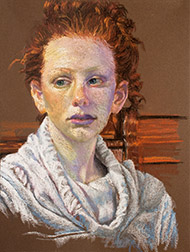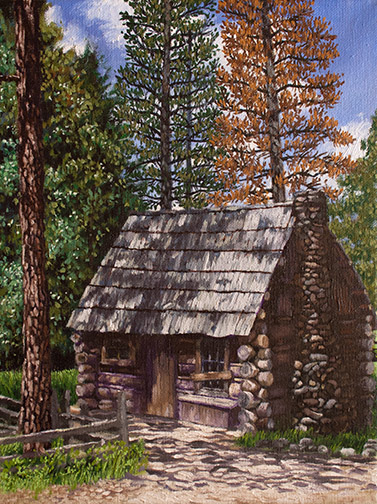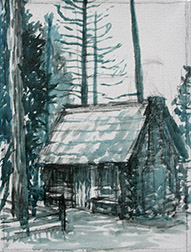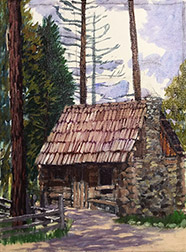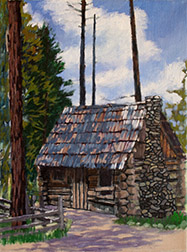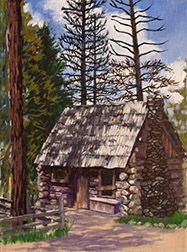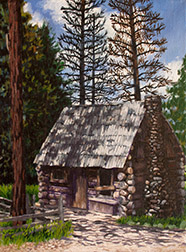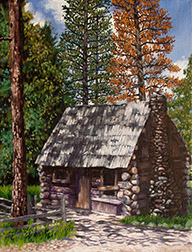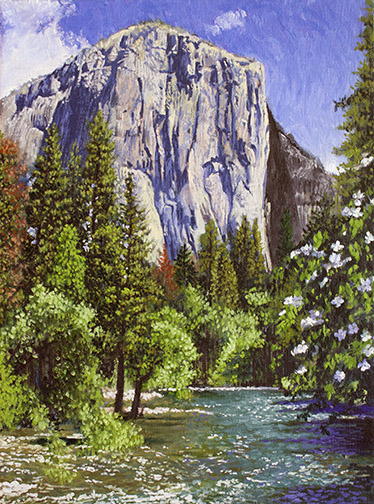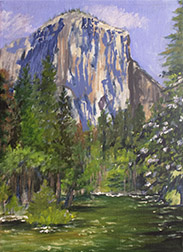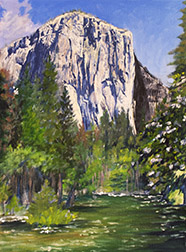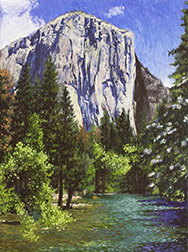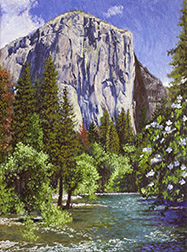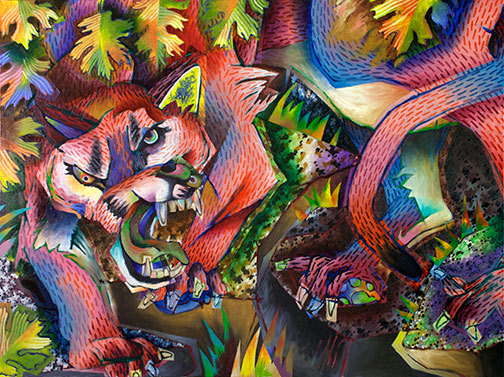
After completing two abstract bird paintings (“At Risk” and “Modern Building Materials”) for the “Avian: Birds in a Changing World” exhibit (a show to benefit our local Audubon Society chapter and Sierra Art Trails), I began thinking about what I wanted to enter in the Yosemite Renaissance show this year
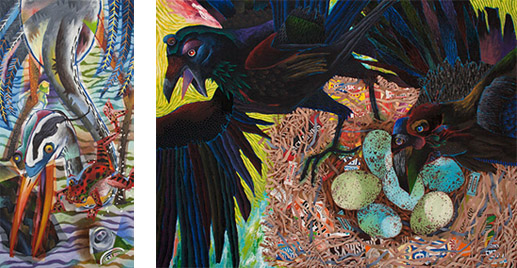
For those unaware of this exhibit and competition, Yosemite Renaissance is an annual show held in the Yosemite Museum Gallery, in Yosemite Village, in Yosemite National Park. It takes place in February, encourages non-traditional approaches to artworks focused on Yosemite and the surrounding Sierra Nevadas and offers a stiff competition, with only a 7% — 8% acceptance rate. After leaving Yosemite the show travels to various venues around California for a year. I love it, when I get into this show!
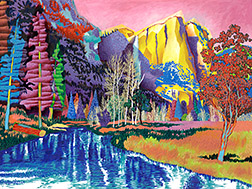
I had one piece, an abstract view of “Yosemite Falls from the Sentinel Swinging Bridge,” which was an appropriate piece to enter, but I wanted to submit something brand new, fresh off the easel and into the competition for the show. Around this time, a mountain lion had been spotted in our neighborhood, encouraging me to take a baseball bat with me each night, as I traveled out to the far corners of our property to turn on security lights. I believe this got into my head, as I decided to take on a mountain lion in my next painting. I’m going to walk you through my steps in painting “Pretty in Pink” here.
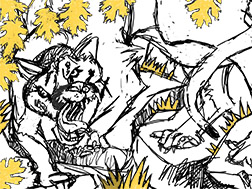
I started this one with a rough sketch, done with a Wacom Tablet and stylus connected to my computer. The computer is a great preliminary visualization tool, allowing me to easily grab a section of my sketch, move it, resize it, rotate it, etc and try what ifs, by turning layers off and on. Doing the same thing on paper, would be difficult and much more time consuming. Living in the Sierras, I’m told mountain lions are often near by, when I hike or mountain bike into wooded areas. They’re just out of site. I recall this being portrayed well in Michael Mann’s film version of “The Last of the Mohicans,” as Hawkeye and his Native American adopted father and brother are guiding the British colonel’s two daughters to a fortress to join their father. The older daughter silently perceives a mountain lion under the foliage, just off the trail, watching them pass. I decided to portray this silent laying in wait, graphically.
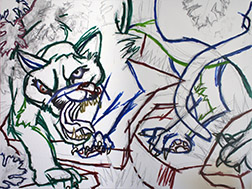
Often my sketch is just a rough concept, a starting point to be further developed on the canvas, but this sketch was spot on, so I started recreating it on my canvas, just as portrayed in the original sketch. Due to the complexity, it proved difficult to recreate accurately and I told myself next time I had a sketch this complex, I’d use a grid system to create the drawing on canvas. After a lot of adjustments, in charcoal pencil and oil paint, I finally had a drawing I was happy with on the canvas.
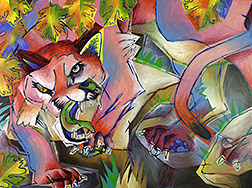
A few painting sessions and I had all the base color blocked in. If I think of a way I might want to vary the color, as I’m blocking in, I execute it right then. If it doesn’t work out, as I begin to refine the painting, I can always paint things over, but I rarely just lay in solid flat colors at this stage. Note how I’ve moved the cat’s muzzle down, as I blocked in the color. I continue to refine my drawing, as necessary, as the painting develops. With the base color in, my cat, background and foreground leaves are all pretty equal in importance. While my goal was to hide the puma, to a great degree, in its environment, I’m going to need to separate the lion a bit more from its environment.
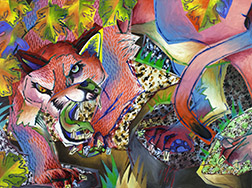
I added a hair pattern all over the mountain lion and different granite patterns to the rock surfaces. This adds a bit more complexity to the scene and, because patterns recede, is the first step in separating the mountain lion from the rest of the environment. Once the patterns dry, I’ll be able to use transparent glazing, as well as opaque painting to move planes forward or back and bring more importance to the cougar.
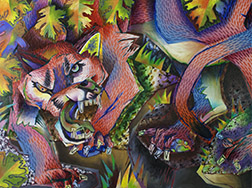
With a lot of the glazing completed I’m happy with the level of separation between cat and environ and the way certain planes advance, while others recede. I’ve also done some detailing on the stylized tufts of grass here. With so much of the painting completed, I determine how I want to finalize the foreground leaves, deciding on a here and there line pattern, inspired by the veins present on oak leaves.
At this stage, all that’s left is to apply the pattern to the remaining leaves, add a few last bits of detailing here and there and somehow take the uniformity away from the violet glazing around the leaf on the right, above the lion’s rump. I decide that some loosely applied ochre paint is the answer here. All these final additions can be viewed in the finished painting at the top of this post.
I completed “Pink” just in time to make the Renaissance entry deadline and recently learned it has been accepted into this years show!

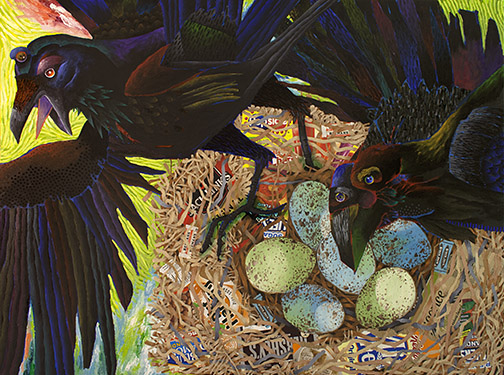
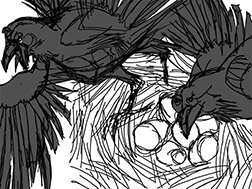
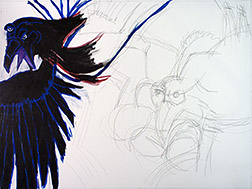

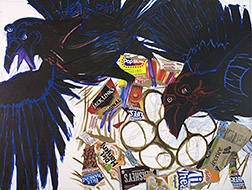
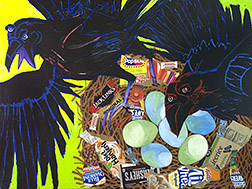
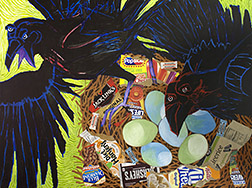
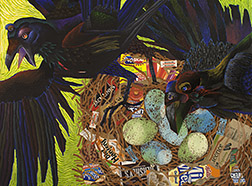
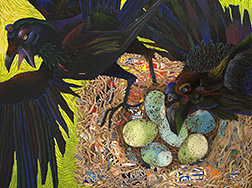
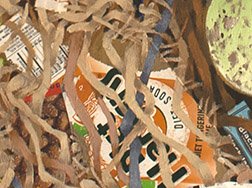
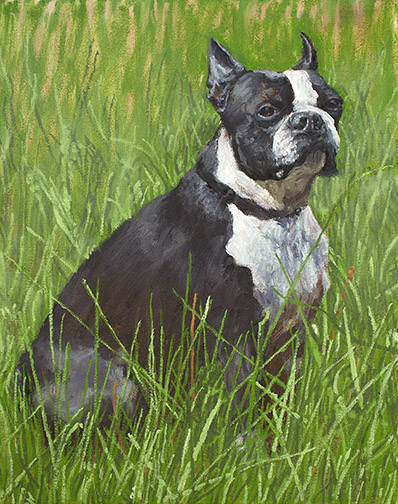
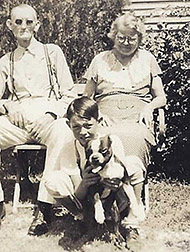
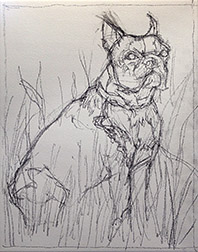
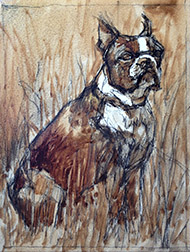
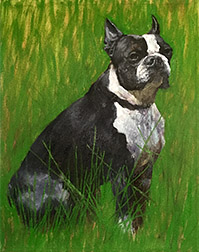
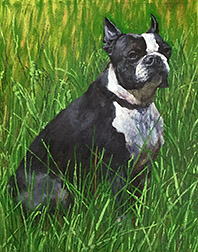
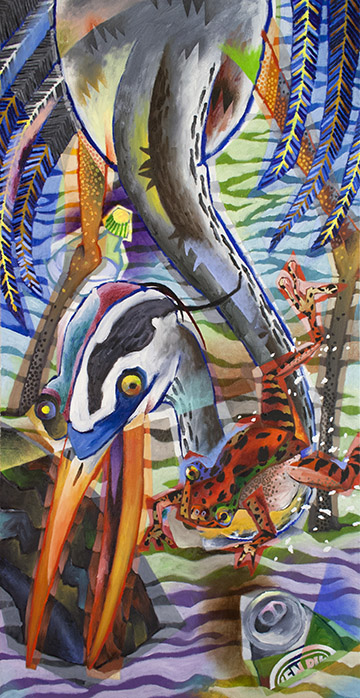
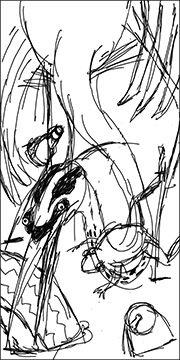
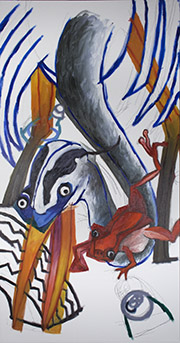
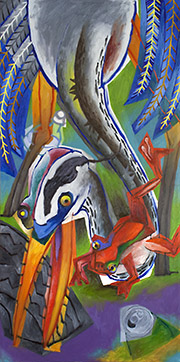
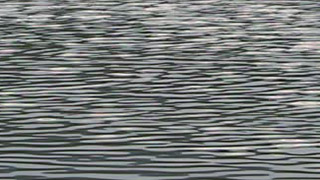
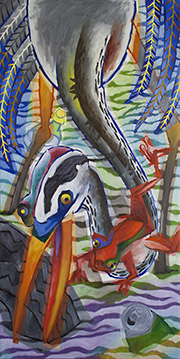
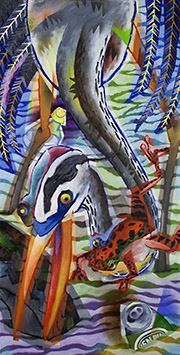
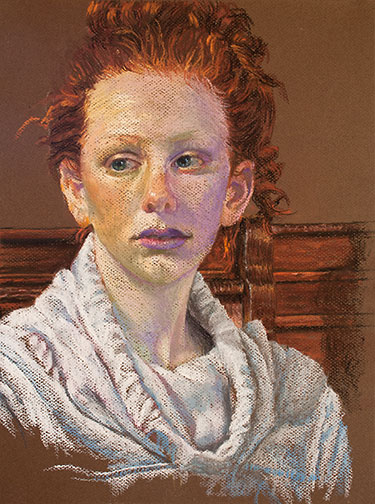
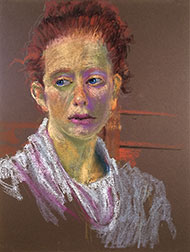
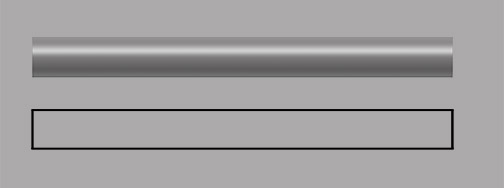
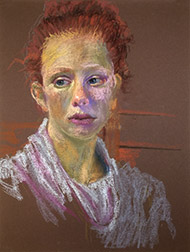
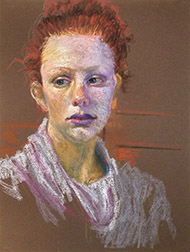
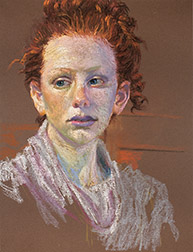 Another session, a longer one, and I had time to make a lot of progress. I finalized the shape of her face, made more changes to her facial skin tones, did a bit more work on her mouth, did a lot of work on her hair (I changed the shape and I added darks and lights) and I began to work on her neck with some new cool pale blues and some lights. I also reconstructed her ears.
Another session, a longer one, and I had time to make a lot of progress. I finalized the shape of her face, made more changes to her facial skin tones, did a bit more work on her mouth, did a lot of work on her hair (I changed the shape and I added darks and lights) and I began to work on her neck with some new cool pale blues and some lights. I also reconstructed her ears.